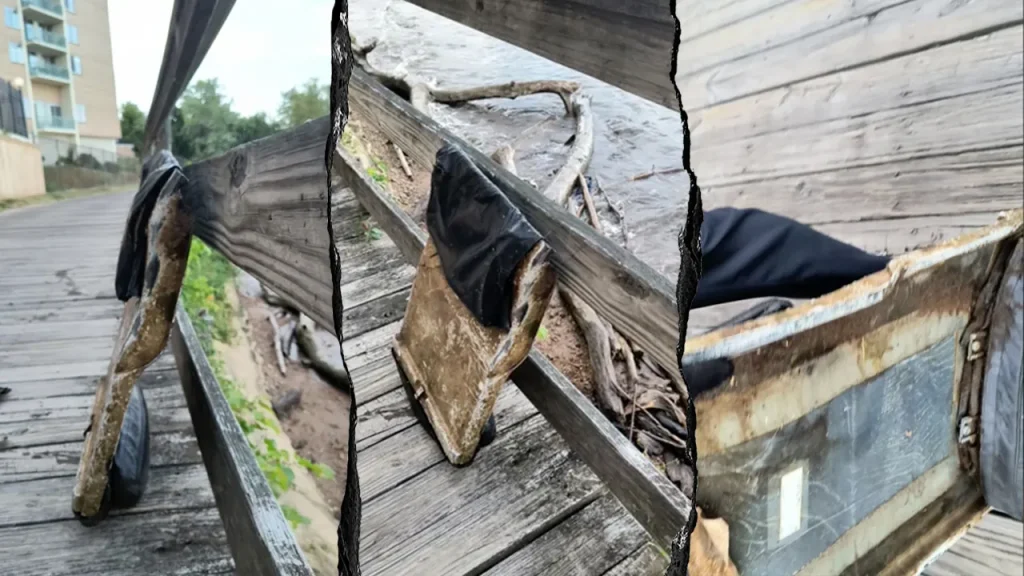Labor Day Weekend Discovery May Link to January’s Fatal DC Plane Collision
A chance encounter during a Labor Day weekend dog walk may have uncovered wreckage from the tragic midair collision that occurred in Washington, D.C., earlier this year. Andrew Guevara and his dog were enjoying a stroll along the Mount Vernon Trail in Alexandria when something unusual caught his eye in the nearby waters. What initially appeared to be ordinary river debris turned out to potentially be significant evidence from the January accident that claimed 67 lives.
“I noticed that there was something. It just looked a little bit odd,” Guevara explained to FOX 5 DC, describing his discovery. Among the items floating in the water, he spotted what resembled an airplane seat component, complete with what appeared to be a tray table lever and a leather pouch. The distinctive curvature and aircraft-like features immediately stood out to him against the typical trash that accumulates along the riverbank. Though initially dismissible as everyday debris, something about these particular items prompted Guevara to contact authorities.
Alexandria police were the first to respond to Guevara’s report, but the potential significance of the find quickly elevated the matter to federal authorities. The National Transportation Safety Board (NTSB) is now taking possession of the recovered items, according to a spokesperson who communicated with Fox News Digital. The agency plans to evaluate the materials and store them until they can be properly transferred to join the remainder of the wreckage from the January midair accident. This methodical approach highlights the continuing investigation into one of the deadliest aviation incidents in recent D.C. history.
The January collision involved a commercial airliner and an Army helicopter, resulting in a devastating loss of life. Back in July, months after the accident, a Federal Aviation Administration (FAA) official revealed a critical lapse in safety protocols that may have contributed to the tragedy. According to their statement, an air traffic controller failed to notify the commercial plane’s crew that an Army helicopter was moving toward their aircraft. This omission represents a significant breakdown in communication that might have prevented the fatal encounter had proper warnings been issued.
Further details released by the NTSB earlier in the investigation indicated that the Army helicopter involved in the collision was flying above its designated altitude limit at the time of impact. This revelation, combined with the communication failure identified by the FAA, points to a complex web of factors that likely contributed to the disaster. As investigators continue piecing together the sequence of events, each recovered fragment potentially offers new insights into how and why this tragedy occurred.
Guevara’s discovery serves as a poignant reminder of how ordinary citizens can unexpectedly become involved in major investigations. What began as a routine holiday weekend dog walk transformed into a potentially significant contribution to an ongoing federal aviation investigation. As the NTSB continues its meticulous work analyzing the newly recovered items, families of the 67 victims may move one step closer to understanding the full circumstances behind their devastating loss. The investigation continues to evolve months after the January collision, demonstrating the painstaking nature of aviation accident inquiries and their importance in preventing future tragedies.








